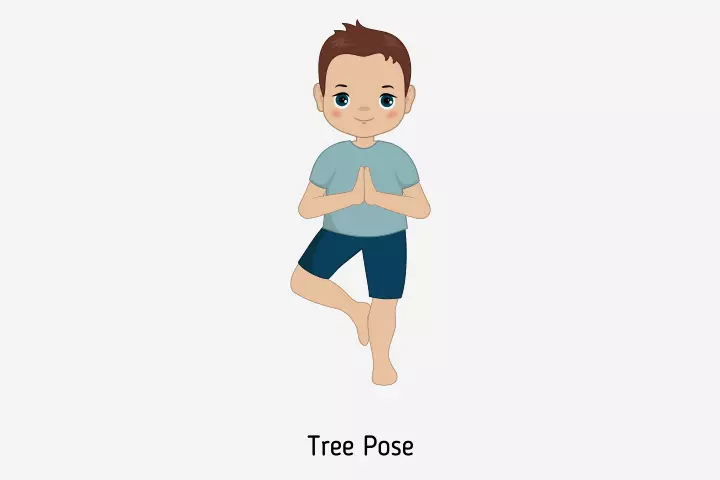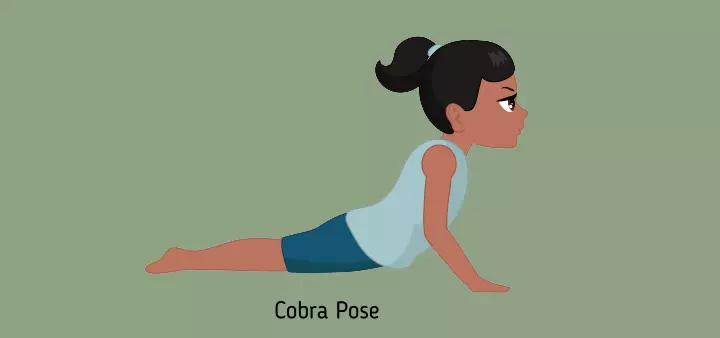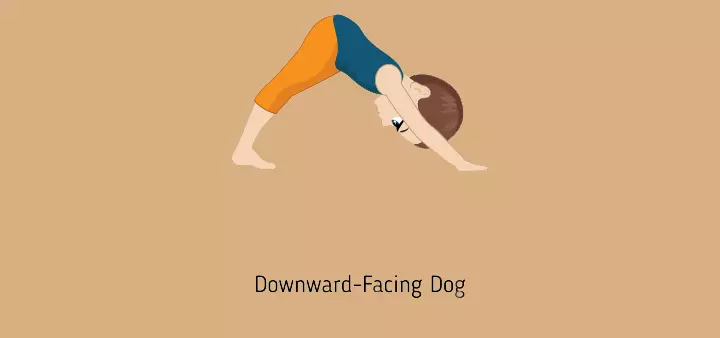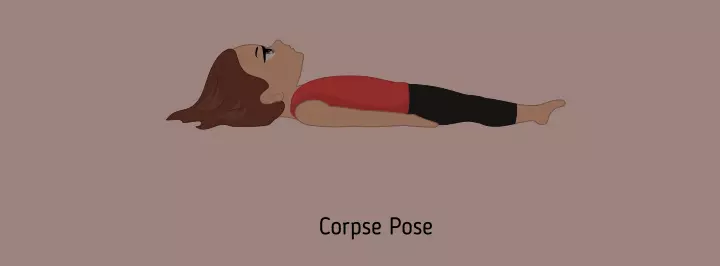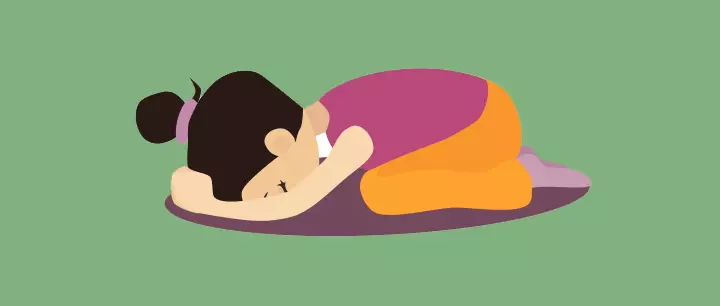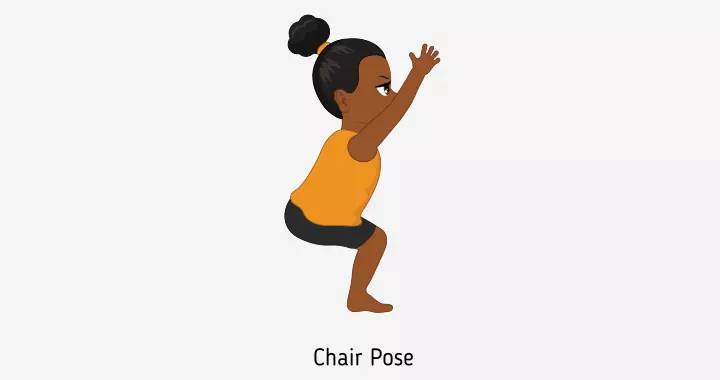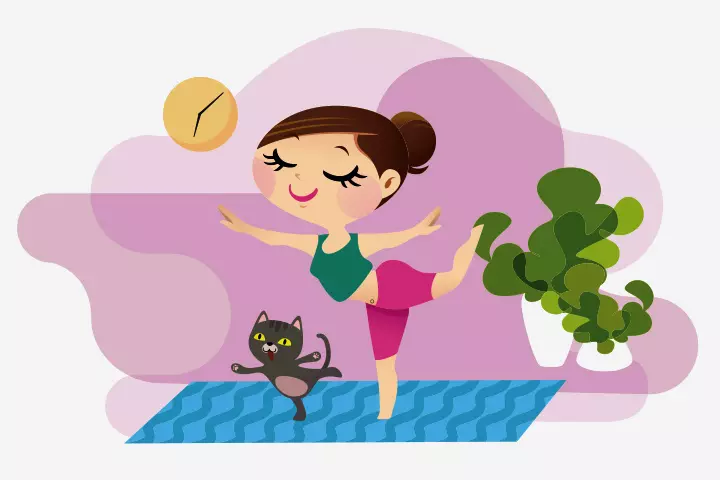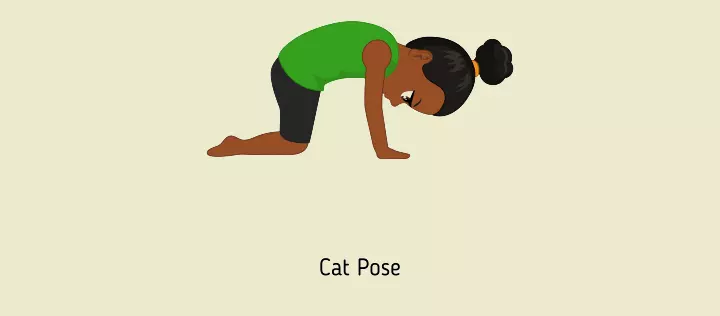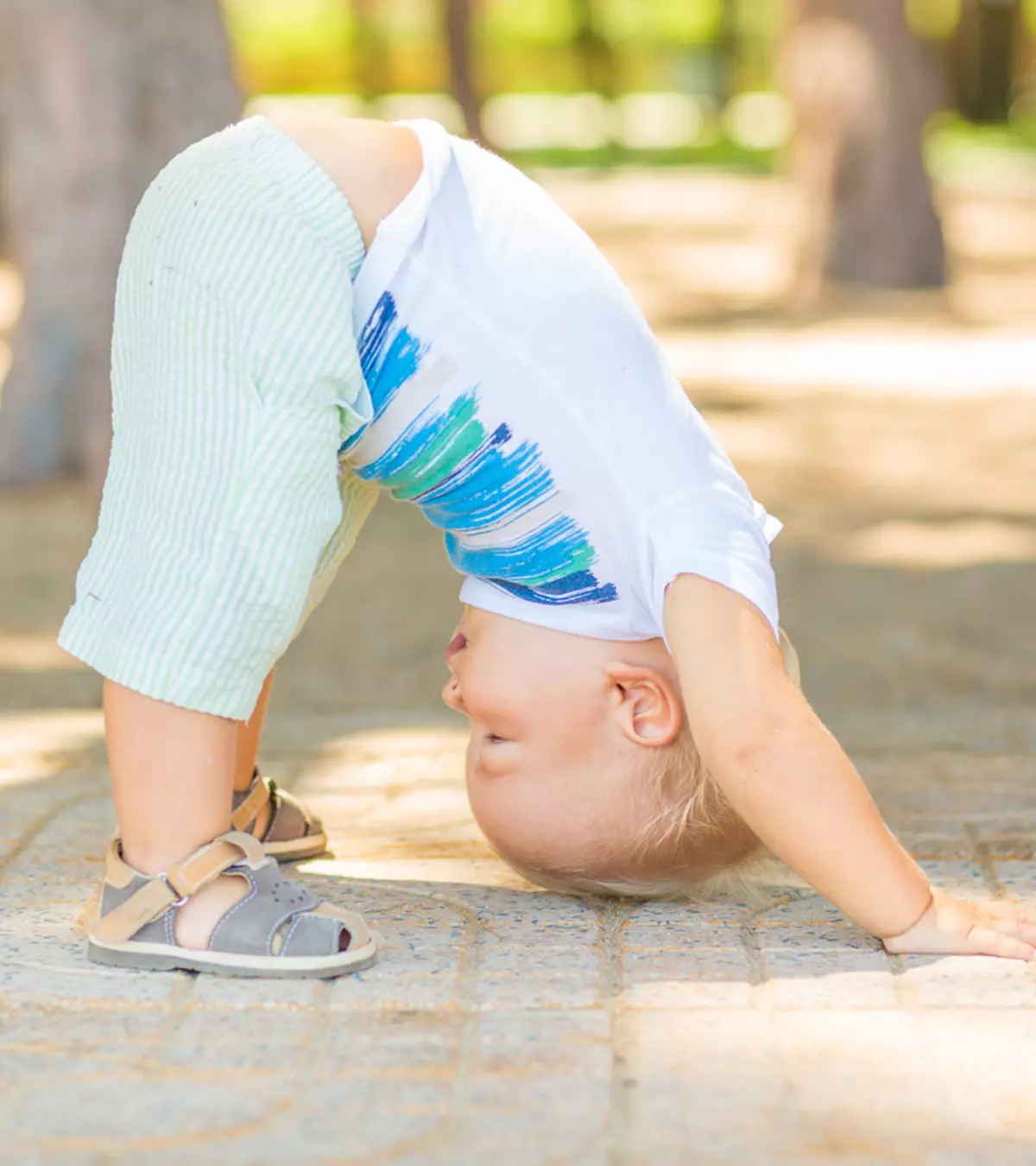

Image: Shutterstock
Just like for adults, yoga for toddlers also has several health benefits. When toddlers begin to learn yoga and include the practice in their daily routine, there is a remarkable change in their flexibility and strength. Yoga for toddlers can bring additional benefits such as increased mindfulness, reduced anxiety, and an increase in discipline.
Your toddler might need parental guidance and observation while practicing yoga, so they do not hurt themselves. Read this post to learn about the benefits and some easy and effective yoga poses for your toddler.
When Can You Begin Teaching Yoga To Children?
The best time to start yoga is as early as three years of age so that the child can reap multiple benefits. However, if the little one is not ready, do not push them.
Possible Benefits Of Yoga For Toddlers
Yoga is more than your typical fun activity and can offer various benefits to your little ones.
1. Enhances physical development
Toddlers learn to use all of their muscles in different ways when performing yoga. Whether it’s lying down, sitting, stretching, or standing, each pose challenges different groups of muscles and promotes physical development. It also helps children develop body awareness, improve their balance and strength, and makes them understand how their body functions (1).
2. Develops cognitive learning like concentration and focus
Yoga asanas are known to increase attention span and improve concentration (2). Practicing a pose encourages a child to focus on the effort it takes to achieve the posture or stay balanced. The single-handed focus translates into other activities in school or when playing a sport. Furthermore, an exercise in the form of yoga asanas promotes oxygen circulation in the whole body, enhancing memory retention (3).
3. Boosts immunity
Besides flu shots and a balanced diet, regular yoga practice can boost your little one’s immune system (4). One of the first things yoga does is reduce stress, and then directly affects immune response.
Asanas stimulate different parts of the body. For instance, downward dog or mountain pose opens up and activates the entire body, forward bend drains out any congestion in the sinuses, and twists help wring out vital internal organs and aid in digestion and elimination. Yoga stimulates the circulatory, digestive, endocrine, and nervous systems enhancing their functioning. This way, the body can better prevent and fight off infection.
4. Helps sleep better
, you don’t want your little one squabbling over toothpaste, bath toys, or stuffed toys. Getting the body moving with yoga relaxes and makes them fall asleep faster (5). Along with falling asleep faster, yoga also contributes to more fulfilling sleep.
Precautions To Take When Toddlers Practice Yoga
A few safety precautions to keep in mind for toddlers will ensure a safe and fun practice.
- Take the toddler’s age, prior experience, and ability into consideration before choosing what asanas they can do.
- Toddlers are naturally more flexible, which is good, but ensure they don’t go overboard.
- Don’t push your toddler. It’s essential to understand their bodies and stop if a pose is uncomfortable for them.
- Ensure you and your little one practice on a leveled surface on a clean yoga mat. It’s best to avoid socks or footwear and practice barefoot.
- Make sure your tiny tot is dressed in comfortable clothing, something they can easily move in.
- Practice in a place with comfortable room temperature. It’s advised not to do yoga in very hot or cold temperatures.
- Unlike older children or adults, toddlers can hold a pose only for a few seconds. Don’t force them to hold a pose for longer than they can.
- Practice the asanas with them and demonstrate first rather than verbally explaining every posture.
- Make sure they’re on an empty stomach or eaten something light. Never practice yoga on a full stomach. It holds good for you too.
- Supervision is crucial. Never take your eyes off
- Start slowly but be consistent.
When practiced the right way, yoga offers one of the simplest and safest ways to ensure a healthy and happy life.
Yoga Poses For Toddlers
Here are some easy yoga postures that can offer multiple benefits to toddlers (6) (7) (8)
(9) (10).
1. Tree pose or Vrikshasana
Image: Shutterstock
Your little has to stand up tall and mighty like a tree.
How to:
- Make your toddler stand upright with their hands on either side.
- Ask them to take a deep breath.
- With the exhale, shift your weight to your left leg and pull your right ankle up so the sole of your right foot rests on your inner left thigh (it can be above or below the knee, based on the comfort level).
- When they’re able to balance, let go of their hands and tell them to join hands above their head.
- Hold this pose for a few seconds and come back to the standing position.
Possible Benefits:
- Stretches back, arms, shoulders, and spine muscles
- Improves balance and focus
2. Cobra pose or Bhujangasana
Image: Shutterstock
Help your child improve flexibility and elevate their mood with this simple posture.
How to:
- Make your little one lay flat on their stomach.
- Palms need to be down near the shoulder.
- Toes have to be pointed outwards.
- Slowly push palms onto the floor and lift head and shoulders until half the chest is off the floor.
- At this point, their elbows can be straight or bent, based on comfort.
- Hold this position for as long as comfortable.
Possible Benefits:
- Releases fatigue
- Stretches abdomen, buttocks, chest, and shoulders
- Strengthens the spine
- Stimulates abdominal organs
3. Happy baby pose or Ananda Balasana
Image: Shutterstock
How can you leave this pose out when you talk about yoga for toddlers! Both adults and little ones love this yoga posture as it relaxes their mind and body.
How to:
- Make your little one lay flat on their back on the yoga mat.
- Next, they should hug their knees to their chest.
- Now, they need to hold their toes and slowly extend their feet.
- Their knees can either be bent or straight, depending on their comfort.
- They can gently rock from side to side or stay still.
Possible Benefits:
- Reduces lower back pain
- Opens groin, hips, and thigh muscles
- Reduces anxiety, stress, and fatigue
- Stretches the hamstrings
- Stretches and realigns the spine
4. Downward facing dog or AdhoMukhaSvanasana
Image: Shutterstock
It is one of the most popular yoga asanas. While it’s pretty basic, it has many benefits.
How to:
- Ask your child to be on their fours, with knees under the hips and palms under the shoulder.
- Then they need to get their knees off the floor, press their palms to the floor and form an inverted ‘V’ shape by reaching the ceiling with their hips.
- Typically, the knees have to be straight, but toddlers can bend them. It depends on their comfort level.
- They can bring their feet closer or further away, depending on their convenience.
Possible Benefits:
- Strengthens bones, arms, back, and legs
- Tones the core
- Improves blood flow to the brain and body posture
- Restores lost energy
5. Corpse pose or Savasana
Image: Shutterstock
It is a yoga asana that looks simple but requires patience.
How to:
- Lie down on the back on the yoga mat.
- Stretch the legs and hands by the side of the body with the palms up.
- Ask your little one to close their eyes.
- It’s important to breathe normally.
- It is the best relaxing yoga for all and suggested to be practiced at the end of the yoga session.
Possible Benefits:
- Improves memory, concentration, and productivity
- Helps reduce insomnia, fatigue, and anxiety
- Reduce blood pressure and tensions of muscles
- Stimulates blood circulation
- Relaxes the entire body
6. Child’s pose or Balasana
Image: Shutterstock
It is an excellent pose for children for relaxing.
How to:
- With knees hip-width apart, ask your little one to kneel on the floor and then sit on the heels.
- Ask them to bring the head down and rest it on the ground.
- Hands can be stretched out or by the side.
Possible Benefits:
- Relieves fatigue
- Reduces anxiety and stress
- Calms the mind and body
- Lengthens and stretches the spine
- Stimulates digestion and elimination
- Provides relief from lower back pain
7. Chair pose or Utkatasana
Image: Shutterstock
While sitting in a chair seems easy, sitting on an imaginary chair is quite difficult.
How to:
- Stand straight with feet slightly apart.
- Stretch your hands out straight.
- Then exhale and slowly bend knees forward and push the pelvis back as though sitting on a chair.
- Now, slowly stretch the arms over the head.
- Just make sure the knees don’t go ahead of the toes.
- Slowly release the pose and come back into a standing position.
Possible Benefits:
- Helps improve balance
- Tones knees, ankles, thighs, shoulder, spine, hips, and legs
- Strengthens the torso and lower back
- Regulates digestive system and heart functioning
8. Butterfly pose or Badhakonasana
Image: Shutterstock
Before you let your toddlers open their wings and fly away, let them learn this pose.
How to:
- Your little one needs to sit on the floor with their legs spread out wide.
- Next, they need to fold their legs such that the feet are joined.
- They can use their hands to grab onto their feet.
- Now, they need to move their knees up and down and keep flapping.
Possible Benefits:
- Stretches knees, groin, and inner thighs muscles
- Improves flexibility
- Reduces fatigue
- Regulates bowel movement
9. Boat pose or Navasana
Image: Shutterstock
Teaching toddlers yoga postures with fun names would encourage them to practice daily.
How to:
- Get your little one to lie down on their back on the yoga mat with feet hip-width apart and hands by the side.
- Next, get them to slowly lift their chest off the floor and legs at the same time to form a ‘V’ shape.
- Their legs need to be straight and at a 45° angle. If they find it difficult to keep their legs straight, they can bend their knees.
- They can keep their hands over their head or stretch them out in front of their chest.
- Try to ensure they don’t slouch, and their back is straight.
Possible Benefits:
- Strengthens arm muscles, thighs, shoulders, hip flexors, spine, and core
- Aids in digestion
- Relieves stress
10. Airplane pose or Dekasana
Image: IStock
It is a favorite pose of most toddlers as they like to balance themselves on one leg.
How to:
- First, stand with hip-width apart.
- Next, get your little one place their hands on their hips.
- Ask them to lift their left leg backward and shift weight to the right foot.
- This will make your torso bend forward over the right leg.
- Now, they need to stretch their arms out at a 45° angle or straight in front of the chest.
- They need to repeat this on the other side as well.
Possible Benefits:
- Helps strengthen legs, hips, arms, and shoulders
- Tones the entire body
- Improves concentration, focus, and posture
11. Cat pose or Marjaryasana
Image: IStock
A gentle and fun posture for toddlers and adults, this offers various benefits to the body.
How to:
- First, get your little one on their fours
- Knees need to be hip-width apart and palms under the shoulder with wrists, elbows, and shoulders in one line
- Next, without moving knees or shoulders, they need to round their spine toward the ceiling
- The head moves naturally toward the floor
- Inhale and come back to the starting position
- Repeat as many times as comfortable
Possible Benefits:
- Stretches torso, back, and neck
- Activates tailbone
- Improves blood flow to the spine
12. Frog pose or Mandukasana
Image: Shutterstock
The asana is something toddlers do naturally, but a little more definition will help achieve several benefits.
How to:
- First, get your little one on their fours.
- Knees need to be hip-width apart and palms under the shoulder with wrists, elbows, and shoulders in one line.
- Next, move their knees further apart, sideways as far as comfortable. The knees should be bent at a 90° angle, and their feet stretched backward.
- The hands are stretched out with the palm facing the ground, fingers spread out, and the elbow under the shoulder.
- They need to look downwards and focus at a point between their hands.
Possible Benefits:
- Helps digestion
- Opens hips
- Strengthens lower back
- Stretches spine, thighs, and hips
Tips For Teaching Yoga To Toddlers
Toddlers may run around, and it could be difficult initially to make them do the asanas as they should. Use the following tips and make the yoga session for little ones easy.
1. Make it fun
You can read them stories, enact postures, show them videos, or play games while teaching yoga postures. This way, toddlers can learn, practice, and have fun—all at the same time.
2. Use props
Props are an excellent way to capture the attention of toddlers. You can use just about anything from balls to toys to stuffed animals to bells or chimes to pom-poms and more. It will keep them engaged and interested.
3. Forget structure
When you’re working with your toddler, the idea is to get them moving and make practicing yoga their daily habit. You’re not preparing them for a competition. So, forget about any structure or formats, instead go with the flow and their comfort level. Don’t push them too much.
4. Be flexible with time
Every toddler is different. You cannot expect every child to perform a yoga pose for thirty seconds on either side. Whether it’s a few seconds or longer, let them have fun. Don’t compare and force them for anything that is beyond their capacity.
5. Don’t worry about perfect poses
Let the children move and work with their bodies as they are comfortable. There’s no necessity for absolute perfection. With time, they’ll improve and hold positions for longer.
6. Do the poses with them
To help them understand how to perform the posture, you should do it with them. It’s an excellent way to bond and encourage them to practice asanas.
7. Get yoga books for toddlers
There are several books out to help them learn about yoga and gain a deeper insight. It will encourage them to practice more and learn different things as well.
Yoga is an ideal practice to obtain a balanced mind and body. Toddlers are hyperactive and full of energy. So channel this energy into something productive with this list of yoga for toddlers. If your child is three years or older, these are perfect for their daily dose of physical activity that can promote flexibility and help them with their concentration power. In addition, these yoga poses are easy and can boost your child’s immunity while keeping them healthy. So, encourage your toddler to try these yoga positions while ensuring their safety, and remember not to push them too hard.
Key Pointers
- Toddlers may start practicing yoga from the age of three to reap its benefits, such as improved concentration and increased immunity.
- You can encourage them to perform yoga by introducing some props or doing it together and making it fun.
- Ensure they take the necessary precautions and not overdo but gradually master the technique.
- Easy and fun poses such as the tree, happy baby, butterfly, and many more poses to try.
References
1. Butzer; Seven Ways That Yoga Is Good for Schools; Greater Good Magazine
2. A yoga program for cognitive enhancement; National Institute of Health (2017)
3. Godman; Regular exercise changes the brain to improve memory, thinking skills; Harvard Health Publishing (2014)
4. Gopal et al.; Effect of integrated yoga practices on immune responses in examination stress – A preliminary study; International Journal of Yoga (2011)
5. Wei; Yoga for better sleep; Harvard Health Publishing (2015)
6. Yoga Asanas (Vrikshasana); Fit India; Government of India Ministry of Youth Affairs and Sports
7. Yoga Postures; Ministry of External Affairs Government Of India
8. Pilates and yoga – health benefits; Better Health Channel
9. Yoga – Benefits Beyond the Mat; Harvard Health Publishing
10. 9 Benefits of Yoga; Johns Hopkins Medicine
Community Experiences
Join the conversation and become a part of our nurturing community! Share your stories, experiences, and insights to connect with fellow parents.
Read full bio of Dr. Anuradha Bansal
Read full bio of sanjana lagudu



